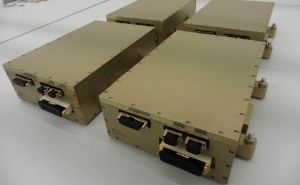Russia's World Space Observatory-Ultraviolet (WSO-UV) will in coming weeks be taking delivery of four sets of CCD camera control electronics. These units will sit at the heart of the instruments on board the WSO-UV, the three WUVS Spectrographs and the near-UV Field Camera.
WSO-UV enhances existing capabilities with its up to date technology, including the camera electronics, conceived, designed and manufactured by STFC's RAL Space. These have been specially designed for the WSO-UV but build upon technologies and expertise from some of the 200 instruments RAL Space has been involved in including Solar Dynamics Observatory and GOES-R.
.jpg?RenditionID=5)
Dr Nick Waltham, Chief Technologist at RAL Space said, “Delivering the units to be integrated into the WSO-UV instruments is the culmination of many years of hard work by my fantastic team. At RAL Space we're constantly perfecting our technology in order to enable bigger and better science research and a deeper understanding of our universe. These electronics are an important step for our international partners towards a new, and much needed, UV astronomy mission."
The telescope, like instruments on-board the Hubble Space Telescope, will detect ultraviolet (UV) light. The WSO-UV is currently the largest UV telescope planned for operation between 2025 and 2035 and will help scientists explore the nature of the early universe and aid the understanding of the formation and evolution of stars and galaxies and including our Sun and Milky Way.
UV light is largely absorbed by the atmosphere and therefore is only efficiently observed from space. With only a few UV instruments currently operational on ageing missions including Hubble, and with huge demand from astronomers, the WSO-UV will create more opportunities to observe the universe from a highly advantageous geosynchronous orbit. Data from the mission will eventually be available to the worldwide scientific community.
RAL Space has overseen the full development of the units from design, through qualification and to the delivery of the flight models. These units are used to drive a CCD designed and manufactured in the UK by Teledyne e2v. The cameras will allow the universe to be studied in unprecedented detail.
The WSO-UV is a major international collaboration led by Russia, forming one of the Russian Federal Space Programme's key scientific projects and is currently scheduled for launch in 2025.

Images:
Top: Artists Impression of the World Space Observatory-Ultraviolet. Credit: Roscosmos
Bottom: CCD camera control electronics for WSO-UK. Credit: RAL Space
